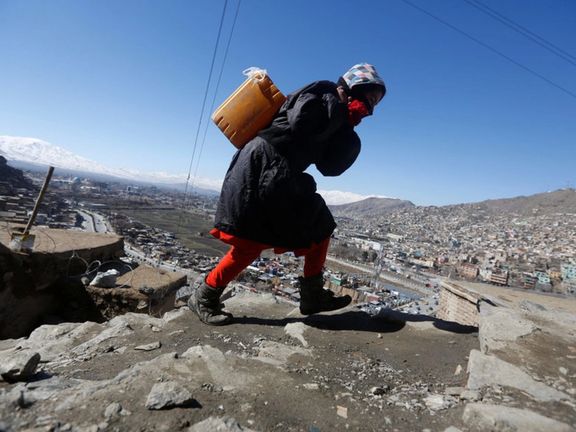Kabul Could Run Out Of Water By 2030, International Group Warns

The international humanitarian organisation Mercy Corps has issued a stark warning that seven million residents of Kabul face a life-threatening water crisis.

The international humanitarian organisation Mercy Corps has issued a stark warning that seven million residents of Kabul face a life-threatening water crisis.
The group reports that half of the city’s deep wells have already dried up, and if current trends continue, Kabul could run out of water entirely by 2030.
According to the organisation, groundwater levels in the Afghan capital have dropped by 30 percent over the past decade. Rapid urban growth and the escalating climate crisis are cited as key drivers of the shortage.
Experts warn that under these conditions, Kabul could become the first major city in the world to run out of water.
The Guardian reports that current groundwater extraction estimated at 44 million cubic metres per year exceeds the natural replenishment rate. If this continues, the city’s underground reserves could be depleted in less than five years, posing an existential threat to Kabul’s population.
Dayne Curry, Mercy Corps’ country director in Afghanistan, stressed the urgency of the situation. “There should be a committed effort to document this better and to draw international attention to the need to address the crisis,” he said.
“No water means people leave their communities, so for the international community to not address the water needs of Afghanistan will only result in more migration and more hardship for the Afghan people.”
Curry noted that Afghanistan’s water infrastructure is heavily dependent on foreign aid, funding that has largely been frozen due to political concerns following the Taliban’s return to power.
According to The Guardian, up to 80 percent of Kabul’s groundwater is unsafe, with high levels of sewage contamination. Access to water has become a daily struggle for residents. Some families spend up to 30 percent of their income on water, and more than two-thirds are reportedly in debt due to water-related costs.
Nazifa, a teacher in Kabul’s Khair Khana neighbourhood, told The Guardian: “Afghanistan is facing a lot of problems, but this water scarcity is one of the hardest. Every household is facing difficulty, especially those with low income. Adequate, good-quality well water just doesn’t exist.”
Meanwhile, some private companies are profiting from the crisis by drilling new wells and extracting public water supplies, selling it at high prices. Nazifa added: “We used to pay 500 afghanis (£5.30) every 10 days to fill our cans from the water tankers. Now, that same amount of water costs us 1,000 afghanis.”
Kabul’s population has surged from under one million in 2001 to more than seven million today, dramatically increasing water demand. The absence of effective governance, regulation and oversight has further worsened the situation over the past two decades.
In early 2025, the UN Office for the Coordination of Humanitarian Affairs (OCHA) reported that partners had received only $8.4 million out of the $264 million needed for water and sanitation programmes in Afghanistan.
Additionally, $3 billion in international aid earmarked for water and sanitation projects has been frozen since the Taliban’s return to power.
One proposed solution is the Panjshir River pipeline project, which could reduce the city’s dependence on groundwater and provide drinking water to two million people. The project’s design phase was completed in late 2024 and is currently awaiting budget approval. The Taliban are seeking investors to fund the $170 million project.
Najibullah Sadid, a senior researcher in water resource management warned: “We don’t have time to sit around waiting for budgets. We are caught in a storm from which there will be no return if we don’t act immediately.”